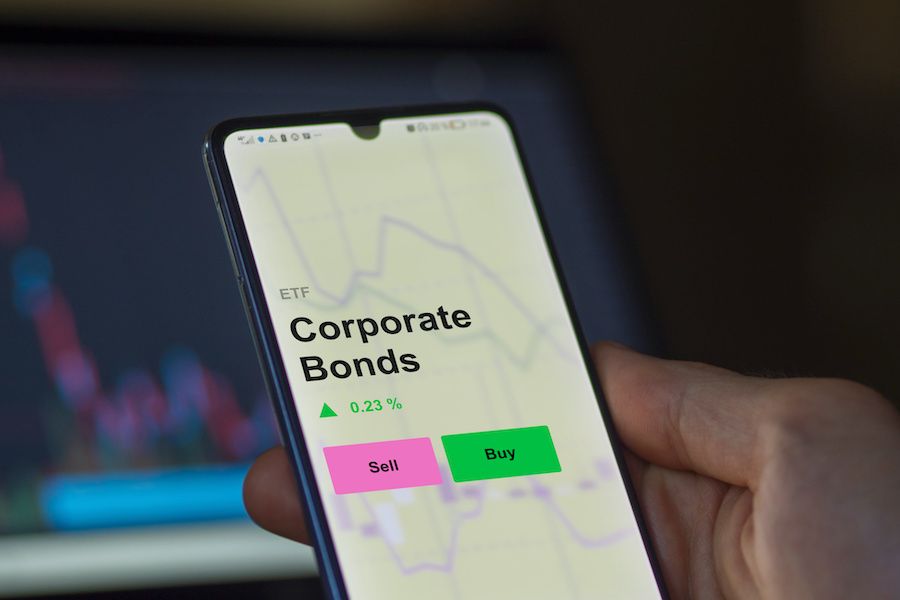Playbook #068: Blue Chip Corporate Bonds

🖼️ The Big Picture
Bond Basics
A bond is a loan. There are three kinds of loans in the investment world: short, medium, and long term.
- A short-term loan of less than two years is generally called a "bill" or sometimes a "short term note" (STN).
- A loan for two to five years is called a "note."
- All loans issued for a longer term than 5 years are called bonds.
Despite these technical distinctions, people often use these terms interchangeably. We will cover short-term notes and notes in a future issue, so for this issue, we're primarily covering bonds, or loans longer than 5 years.
You also want to be aware of three different types of bond issuers (those who borrow): governments, municipalities, and corporations.
In this issue of CAPITALIZE, we're focusing on corporate bonds… specifically “blue chip” bonds, meaning they’re stable, mature, and profitable companies, making relatively safe investments.
Differences Between Stocks and Bonds
A key difference between stocks and bonds is that stocks make no promises about dividends or returns. The company is under no obligation to pay you dividends, even if they have done so in the past. For example, 36 companies in the S&P 500 Index suspended dividend payouts in 2020 as a response to the pandemic.
This unpredictability can't happen with a bond. When it issues a bond, the company guarantees it will pay back your principal (the face value) plus interest.
The interest is paid out at regular intervals (often quarterly or semi-annually) and corporate boards are bound by federal law to pay that out on time.
If you buy the bond and hold it to maturity (when the loan expires), you know exactly how much you're going to get back. Bonds are traded in $1,000 increments. So for each bond you buy, you'll receive $1,000 at maturity.
Bond Metrics
Bonds are always issued at the face value of $1,000, but they can be traded in the marketplace after that — either for a premium or at a discount. When you buy a bond on the secondary market, the price is based on a scale of 100.
So if the price of a bond on the open market is 101.0, you would pay $1,010 to acquire one bond, which is a 1% premium.
If the price of the bond is listed at 91.0, you'd pay $910 to acquire the bond, which is a 9% discount.
The "coupon" rate of a bond is always what percentage the company has set to pay out based on the initial bond price (par value, or $1000).
Why Bonds Trade at Discounts and Premiums
After someone buys a bond, they may need to sell it before maturity. Plus, some people may want to buy a bond after the initial bond issue.
To help investors, there is a secondary market of bonds, similar to the stock market. One big difference is that there is much less volume and liquidity in the bond market.
What Qualifies as a Blue-Chip
- You’ve heard of them (think Coca-Cola, JPMorgan Chase, Walmart)
- They’ve been around a long time (despite Facebook / Meta having a massive market cap and brand name, they were founded in 2004, which doesn’t make them well-established enough to be a blue chip)
- Less volatility, and less affected by economic downturns
- Market cap in the billions of dollars with a high credit rating, and part of a major index like the S&P 500, Nasdaq 100, or Dow Jones Industrial Average
How Yield is Calculated
If the coupon rate of a bond is listed at 6.8%, this is the interest the borrower (corporation) pays on the loan. But it's not necessarily the interest you earn.
The borrower calculates the interest payment by multiplying the coupon (6.8%) times the par value ($1,000), so 6.8% times $1,000 equals $68.00. This is the annual interest amount — usually paid in two equal installments of $34.00.
The coupon will not change. That means bondholders are guaranteed payments equaling $68.00 a year per bond.
But since the price of the bond can change, the yield can go up or down.
Here's what your yield looks like when you buy a bond that is selling at a premium:
So if you pay $1100 for this bond, you would only receive a 5.9% yield on your investment – plus you'd only get $1000 returned to you if you held on until maturity.
Of course, the opposite is true if you buy a bond at a discount:
So if you pay $930 for this bond, you would actually receive a 7.3% yield on your investment – plus you'd get the full $1000 returned to you if you held on until maturity, which is $70 extra on top of your purchase price.
🔢 By The Numbers
You don't have access to this CAPITALIZE issue at the moment, but if you upgrade your account you'll be able to see the whole thing, as well as all the other posts in the archive! Subscribing will give you immediate access.
This CAPITALIZE issue is for members only
Join nowWhat is CAPITALIZE?
CAPITALIZE is a tool for discovering new ways to grow your wealth. You get a new investment idea each week in a simple 7-Minute report. Quickly check to see if it matches your "Investor DNA" and fast-track your way to being a top 1% investor... with less risk. Created by Wealth Factory for people who want to build their wealth and keep it.
